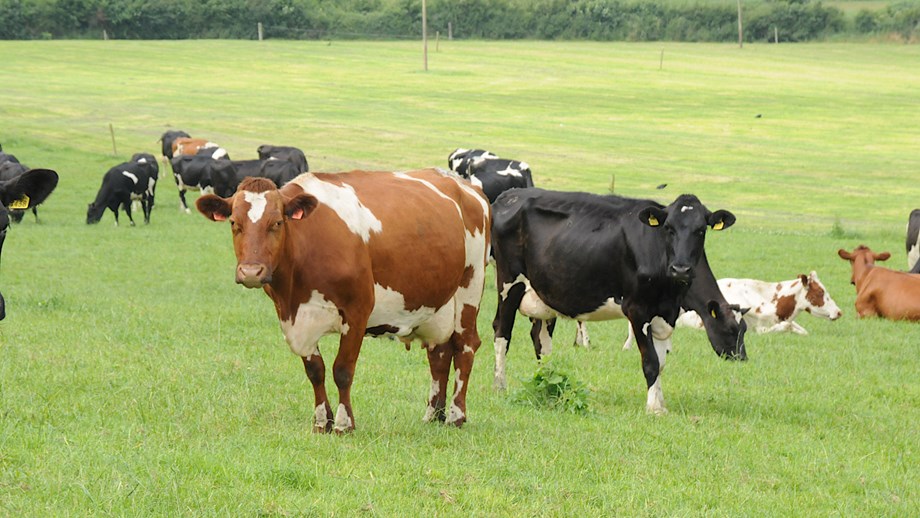The Northern Ireland dairy cow project was established to identify if Norwegian Red cattle have a role in improving the health, fertility and longevity of Northern Ireland (NI) dairy herds.
The experiment involved 221 Holstein-Friesian (HF) dairy cows and 221 Norwegian Red (NRF – in the study: NR) dairy cows. The NRF cows were imported from Norway.
The HF cows were born on the participating farms, and were selected to be of a similar age as the NRF cows. On each farm the HF and NRF heifers within each age group were subject to the same rearing regimes until calving. Cows completed five lactations on the experiment, and remained on the experiment until the date of their sixth calving, unless they died or were culled/sold prior to that.
Commercial dairy farms at various locations
The experiment was established on 19 commercial NI dairy farms in 2000. Farms were selected to represent a range of geographical locations within NI, a range of milk production systems (8 predominantly winter calving herds, 8 predominantly spring calving herds, and 3 mixed winter-spring calving herds), and farms differing in concentrate inputs.
Study results
At first calving the incidence of stillbirths for the NRF cows was 4%, compared to 13% for HF cows. SCC's were approximately 40% lower for the NRF cows during each of lactations 1 – 5. While SCC is known to be positively correlated with milk yield, there were only relatively small differences in milk yields between breeds within the current study.
The overall culling data from the experiment highlighted that 28.5% of HF cows and 11.8% of NRF cows were culled as infertile prior to lactation 6.
All reproductive data were recorded by the participating farmers. There was a clear trend toward higher conception rates to first AI with the NRF cows, although actual differences between breeds were only significant during lactations 1 – 3.
Milk production and composition
Cows were milk-recorded monthly by milk recording technicians during lactations 1 – 3, while thereafter a number of herds moved to alternative monthly milk recording.
While differences in milk yield between the two breeds were inconsistent, there was a general trend for HF cows to have higher 305-day milk yields and full lactation milk yields than the NRF cows in lactations 1 – 3, but not during lactations 4 and 5. However, as a consequence of the higher milk protein concentrations observed with the NRF cows, combined with the trend for the NRF cows to produce milk with a higher milk fat concentration, the two breeds did not differ in terms of fat yield, protein yield, or fat plus protein yield in most lactations.
A final report with details of the trial have been published in a booklet which is available from AgriSearch.
Read more about the trial with Norwegian Red in Northern Ireland here
